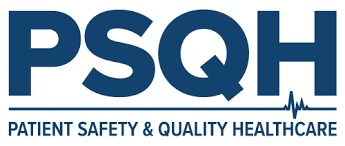
02 Oct Sharps Injuries: How Technology Can Reduce One of Healthcare’s Most Under-Reported Issues
PSQH: Needlestick injuries are among both the most prevalent and the most preventable occupational hazards affecting U.S. healthcare workers. With mass inoculations on the horizon once a COVID-19 vaccine or vaccines are approved, this issue has moved to the forefront.
Needlestick injuries, which fit into the broader category of sharps injuries, can harm healthcare workers by exposing them to blood and other hazardous materials, including infections from hepatitis C, hepatitis B, and HIV, according to the U.S. Centers for Disease Control and Prevention (CDC). Most needlestick injuries are experienced by frontline healthcare workers and can result in emotional impact that is “severe and long-lasting,” according to the CDC.
For the workers who suffer needlestick injuries and the provider organizations that employ them, the consequences can be serious and include the loss of employee time and related costs to investigate the injury, laboratory testing, post-exposure treatment, and replacing or reassigning staff.
While estimates vary, direct and indirect costs of needlestick injuries average more than $3,000 per victim, according to a report from Safe in Common. Further, needlestick and sharps injuries can create “enormous stress” for victims and their families, as testing for bloodborne pathogens can last for months, producing prolonged feelings of anxiety and distress, according to the CDC.
However, needle-free injection technology offers strong potential to alleviate these problems. This technology is designed around a high-pressure, spring-driven, stainless-steel piston and works by using a specially designed syringe to inject liquid medication subcutaneously, intramuscularly, or intradermally via a specialized device. Citing U.S. government statistics, a report in BioMedicine International estimated that 29% of hospital needlestick injuries could be prevented through the adoption of safety-engineered needles or needle-free devices.
Needlestick and sharps injuries: The basics
Sharps injuries are defined as penetrating stab wounds from a needle, scalpel, or other sharp object that may result in exposure to blood or other body fluids. They generally occur as a result of healthcare personnel using sharp equipment in a fast-paced, stressful, and/or understaffed environment. Additionally, sharps injuries sometimes are the result of unsafe practices, including passing sharps hand-to-hand between team members, placing sharps in an overfilled disposal container, failing to use a safer device, or failing to identify a safer alternative, according to the CDC.
Although health experts acknowledge the widespread occurrence of needlestick and sharps injuries, no one really knows how prevalent they are. Figures cited in 2000 by the CDC estimate annual needlestick and other percutaneous injuries to healthcare workers range between 600,000 and 800,000. More recently, BioMedicine International estimated the annual number of needlestick injuries in the United States to be around 384,000.
The reason for the ambiguity is simple: A large amount of needlestick injuries (up to half, according to some estimates) continue to go unreported, meaning that the numbers we have access to are “only the tip of the proverbial iceberg,” the CDC reports. Reasons driving this significant under-reporting may include the time-consuming reporting process, the belief that sharps injuries are minor incidents, and fear of a positive test result for a serious infection. In other cases, workers lack proficiency in needlestick procedures and desire to avoid drawing attention to their errors.
Regardless, the healthcare industry should not be focused on getting an exact count of these incidents. “The occupational health risks associated with contaminated sharps injuries become less about national estimates of overall numbers, but more so about identifying how the injuries that are occurring can be prevented in the future,” the CDC states.
Disposable syringes are the medical devices associated with the highest percentage of sharps injuries, followed by suture needles, scalpel blades, and IV stylets. Injuries from disposable syringes affect nurses more than any other single professional group, according to the CDC.
How needle-free technology can help
Clearly, one of the best ways to reduce the prevalence of needlestick injuries is to reduce healthcare workers’ exposure to needles to the greatest extent possible. Needle-free technology is an obvious solution.
In addition to providing a safer alternative for the administration of vaccines, needle-free injection technology is easy to use and provides a consistent dose of medication compared with the variables of a needle injection, in which proper technique is required such as ideal needle angle and depth of skin penetration.
Further, needle-free injection devices offer a greener, more environmentally friendly option than traditional needles and syringes, as needle-free devices do not require disposal in sharps containers. About 16 billion injections are administered each year across the globe, but in many cases the needles and syringes used for these injections are not disposed of properly, according to the World Health Organization. That leads to risks for healthcare workers and waste handlers, who may be exposed to these sharp objects and any biohazardous materials on them.
While the true scale will likely never be fully appreciated, needlestick and sharps injuries undoubtedly affect hundreds of thousands of U.S. healthcare workers each year, leading to avoidable stress, trauma, and costs. We owe it to them to explore all reasonable alternatives to alleviate these often-preventable incidents. Needle-free injection technology is a great place to start.
Scott E. McFarland, JD, is CEO of IntegriMedical LLC.



